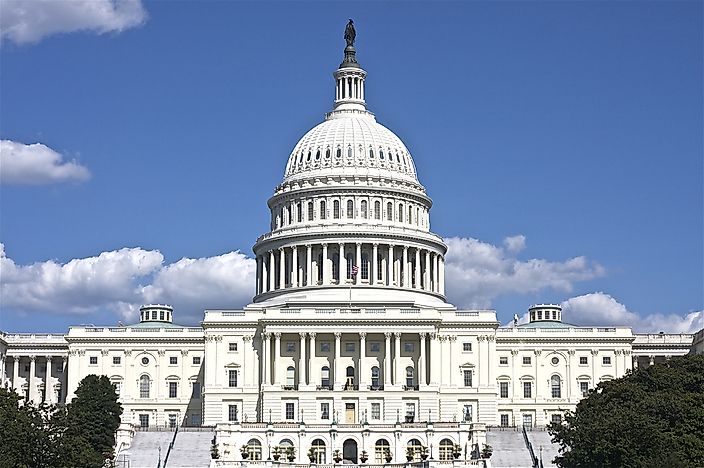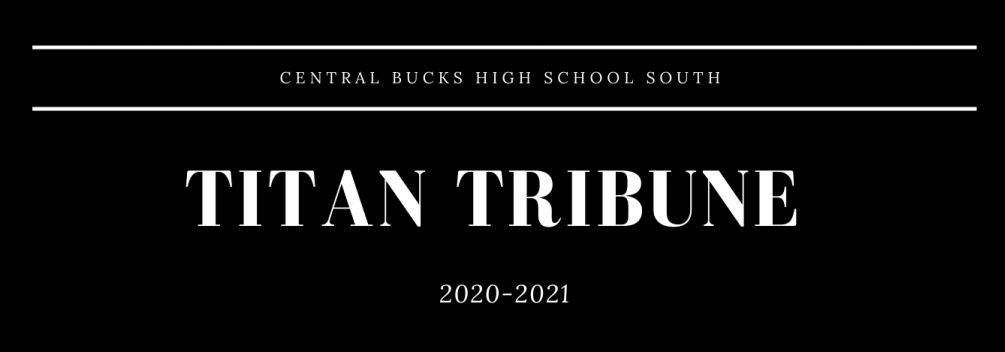America’s Healthcare Problem and the Solution to Fix It
America’s healthcare situation has been under scrutiny for most of the 21stcentury. Citizens have criticized the expense as well as the accessibility of healthcare. As insurance rates rose, as did premiums, peoples’ patience dwindled.
The Affordable Care Act (2010) only exacerbated frustrations.
It was meant to provide better access to healthcare for lower class citizens in the form of subsidies. It also required, by law, that everyone have a health plan. Although initially accepted as a viable solution, it soon became apparent that this wouldn’t work.

The middle class were left burdened with high deductibles (the money a person has to initially pay out of pocket). This made people worry more about going to the doctor or receiving basic medical services due to having to pay more.
The mandate that everyone needed a health plan was also not heavily enforced by the government, which has resulted in citizens still being uninsured.
This isn’t the first time the middle class has encountered a poor healthcare system.
In the 1960’s, the government introduced Medicare and Medicaid. Medicare provided coverage to people over 65 years and people with disabilities while Medicaid provided coverage to families with very low incomes (similar to the current Affordable Care Act).
Both plans had one thing in common: They left out the middle class of America and many others.
Anyone that did not qualify had to find coverage through their work employer or paying on their own for private insurance. Under private insurance, people pay their costs to their insurance company (Aetna, United Health Group, and others). The insurance company will then require a copay before they cover the rest of the treatment or service.
Essentially, the cost of the bill is split between the consumer and provider.
However, from company to company, people’s copays are all different and typically depends on how high their deductibles are.
“According to the CDC’s National Health Interview Survey, a high deductible for single-person coverage was defined as at least $1,150 in 2009 and $1,300 in 2016” (Smuskiewicz). This means people are paying more out-of-pocket than ever before and it could only get worse.

The Solution
The answer to healthcare cannot be found domestically but internationally, there is one country the U.S. might be able to learn from: Switzerland.
Switzerland has a consumer-controlled system. The people are in control of how much they spend on health, not the government.
With nearly 85 private insurance companies to choose from, the Swiss have economic freedom when it comes to buying health insurance. If they don’t like one company, or can’t afford it, they can shop around for one that tailors to their needs.
By doing this, Swiss consumers reward the company that offer the best value for their money. This creates competition among different providers to stay efficient and causes Swiss insurers to “spendonly about 5 percent on general and administrative expenses, as compared to 12-15 percent in the US” (Herzlinger).
Citizens are legally required to obtain a health coverage and stay in the system so it keeps insurer’s costs down. The government also provides subsidies to keep their citizen’s premiums low.
By enforcing the mandate more strictly and providing more subsidies, Switzerland has “managed to insure over 99% of their citizens” (The Economist), beating out the United States’ 90% insurance rate.
And this statistic has clear results.
The Economist goes on to state that “28% of Americans have multiple chronic health problems (such as diabetes or arthritis), more than in any European country.”
Switzerland has produced healthier citizens and have done so in a cheaper manner.
Healthcare currently accounts for roughly 17% of the GDP in the United States without covering everyone. Meanwhile, no European system costs more than 12% of GDP.
Implementing a consumer-driven healthcare system is the answer.
Not Removing, But Modifying
Completely removing Medicare or Medicaid or Obamacare would be nonsensical. For all the problems they do cause, it would come at a cost.
Millions of people are insured under those plans. Heavy backlash would follow and premiums and deductibles would actually rise more.
The government just needs to modify the situation. And it starts with mandating.
One reason the Switzerland plan worked so well was because the government made sure to enforce the mandate that everyone buy health insurance. Under Obamacare, the mandate has not been enforced effectively.
Raising the penalty tax for people without insurance would put pressure on them to shop for insurance and would be a source of revenue for the government. The government needs to make sure people are actively shopping for healthcare and that money is flowing in that sector.

Another way to start up a consumer- driven system is by allowing employees to “cash out” of their employer insurance.
One might wonder why someone would cash out of their employer’s insurance, especially if their coverage is good. Here’s why:
Employer health insurance is essentially money that would otherwise be paid as income. If an employee decided to cash out, they could use this new income to purchase their own insurance.
“A 2006 cash out would have yielded $12,000-the average cost of employer sponsored health insurance-thus raising the income of joint filers who earn less than $73,000 by at least 16%” (Herzlinger).
With an increased income, there will be a higher demand for health insurance because people will have more money to spend. Cashing out would lead to a rise in the number of health insurance companies that are out there because each company, and newer ones entering the market, would want to earn a profit from more people shopping in the market.
Employees wouldn’t be forced to cash out if they like their current plan. This relates back to the idea of economic freedom. If they feel their employer plan isn’t as good as something they could be getting from a private company, they would have the option to cash out. From there, how they choose to utilize this money is entirely up to them.
Switzerland’s plan worked so effectively because they had so many companies to choose from. This brought down each insurer’s cost because people were staying in the system, once they had a coverage.
If insurer’s costs are low, and people have money to spend, health care becomes simpler and more accessible.
Under Obamacare, “thirty-six million people in the United States (13.3% of the population) still did not have health insurance as of 2014, according to the National Health Interview Survey compiled by the Centers for Disease Control and Prevention (CDC)” (Smuskiewicz).
This new plan would decrease this number and increase the current 90% insurance rate.
As of 2015, “70% of Americans between the ages of 18 and 64 had private insurance” (Blackwell). With more of the population trending towards private insurance, promoting private insurance is a huge focus for the plan to work.
This goes back to the idea of common good. The more people insured, the more able they are to receive medical services, consequently fulfilling healthier lives.
Is it Possible?
To push the U.S. further to a consumer-driven system, the U.S. would need to give out more meaningful subsidies to lower-class citizens. This would keep premiums low and inspire lower-class citizens to shop for health care, joining the pool of other consumers who decided to cash out.
In Switzerland, the Swiss poor shop for insurance like everyone else. The sick are not discriminated against either as they pay the same price based on others in their demographic category. This would further inspire those citizens to shop around, knowing they aren’t being discriminated against.
Going back to the idea of right, healthcare is believed to be a basic human right, one which everyone is entitled to and should have access to. In this system, people uninsured or on low income are getting the right to healthcare just like everyone else.

If more and more people turned to the private market for their health care, the number of citizens under a government program, such as Obamacare, would dwindle. The economy would prosper from competition and government spending on healthcare would decrease. With decreased costs, the government can then provide better subsidies to those that need it.
Once people find an insurance company, they won’t need any more government subsidies. Therefore, the number uninsured would go down, meaning the government wouldn’t need to pay as much out to citizens.
This action would not remove government entirely from control of healthcare, as there would still be regulations. However, the government would not be as invested as before while also saving money.
What makes the Switzerland plan different from the current Obamacare is the lower premiums and deductibles, lower spending by the government, more emphasis on competition among health providers, and more subsidies for lower-class citizens.
“Insurance works by pooling risk, which means everyone pays but only some benefit; Many people do not want to contribute to the healthcare expenses of those who do not work” (Blackwell).
A consumer driven system would solve this issue. The middle class won’t be paying as much money to assist those who are uninsured because the number which exist will have decreased. Lower class citizens would receive subsidies to shop around, which would drive down the cost on the end of middle class citizens.
The U.S. economic system is built on competition and economic freedom. To solve its healthcare problem, the U.S. needs to go back to its roots and implement a consumer-driven healthcare system, one where the consumer is in control.
Works Cited
Blackwell, Amy Hackney. “Healthcare Reform.” Health and Wellness Resource Center, Gale, 2018, go.galegroup.com/ps/retrieve.do?tabID=Reference&resultListType=RESULT_LIST&searchResultsType=MultiTab&searchType=BasicSearchForm¤tPosition=1&docId=GALE%7CCX3662600514&docType=Topic+overview&sort=Relevance&contentSegment=&prodId=HWRC&contentSet=GALE%7CCX3662600514&searchId=R1&userGroupName=centralbucksouth&inPS=true. Accessed 4 Dec. 2018.
“The Fix for American Health Care Can Be Found in Europe.”The Economist Newspaper, 10 Aug. 2017, www.economist.com/united-states/2017/08/10/the-fix-for-american-health-care-can-be-found-in-europe. Accessed 3 Dec. 2018.
Herzlinger, Regina. “Consumer-Driven Universal Healthcare Is the Best Solution.” Opposing Viewpoint, Greenhaven Press, 2011, go.galegroup.com/ps/retrieve.do?tabID=Viewpoints&resultListType=RESULT_LIST&searchResultsType=MultiTab&searchType=BasicSearchForm¤tPosition=3&docId=GALE%7CEJ3010450257&docType=Viewpoint+essay&sort=Relevance&contentSegment=&prodId=OVIC&contentSet=GALE%7CEJ3010450257&searchId=R4&userGroupName=centralbucksouth&inPS=true. Accessed 3 Dec. 2018.
Kronenfield, Jennie Jacobs. “Healthcare.” Issues: Understanding Controversy and Society. ABC CLIO, issues.abc-clio.com/Topics/Display/913392. Accessed 7 Nov. 2018.
Smuskiewicz, A.J. “U.S. Healthcare System.” ABC CLIO Issues, ABC CLIO, 2018, issues.abc-clio.com/Search/Display/2078283?terms=health+care&sType=quick. Accessed 4 Dec. 2018.



